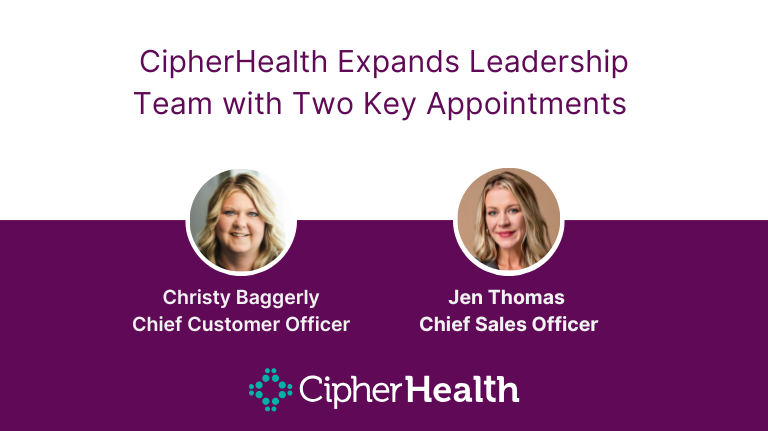The following article originally appeared in Becker’s Hospital Review.
With health systems serving as hubs of both health and healthcare in the communities they serve, it is more important than ever to engage patients during their hospital stay and throughout their care journey. Due to increased accountability for patient perceptions of care, hospitals are adopting more robust processes to measure and improve the quality of care and, more importantly, how care is delivered by the team. As such, healthcare organizations are empowering employees as stewards of patient engagement — enhancing staff satisfaction by bringing meaning to their everyday work, which in turn positively impacts their patients.
Improving patient perceptions requires a shift from a culture of mere accountability to a culture of ownership. According to Sigma Theta Tau International Honor Society of Nursing, employees who feel accountable focus solely on the tasks that fall within their job description, “doing what they are supposed to do” because it is expected of them and linked to extrinsic sources of motivation. In contrast, employees who feel ownership are intrinsically motivated by pride and engagement, accepting personal responsibility to “do what needs to be done” in ensuring patients have exceptional care experiences. Going from good to great requires a culture of ownership.
One of the most impactful tactics that health systems leverage to achieve this cultural shift is the implementation, measurement, and improvement of their rounding processes. As defined by American Nurse Today, the official journal of the American Nurses Association, purposeful rounding is the “proactive, systemic, evidence-based intervention that helps anticipate and address patient needs.” To be purposeful, rounding must be conducted with the intent to identify and resolve patient concerns; it is not simply another task in a seemingly endless to-do list. Simply put, patients are not interruptions in our work — they are the purpose of our work. As such, organizations that hardwire purposeful rounding as a cornerstone of their patient engagement strategies create ownership cultures, promote patient safety, encourage team communication, and improve staff ability to provide efficient patient care.
Norton Healthcare, a five-hospital system based in Kentucky, seeks to provide the highest quality and experience of care delivery. At Norton Healthcare, every patient and family interaction matters. As a result, the organization strives to reflect a culture in which every single team member plays an important role in delivering a consistently excellent experience. Jason Coffey, Director of Employee Experience at Norton Healthcare, and Jennifer Hoert, Manager of Patient Experience at Norton Women’s & Children’s Hospital, share their journey toward hardwiring this culture of ownership across their health system with purposeful rounding.
Start the Journey by Creating Focus
The impetus for embarking on this journey to purposeful rounding a few years ago, shared Jason, was that multiple initiatives led by different leaders made it difficult to develop a strategic and targeted approach across the organization. As a result, there were a lot of competing priorities from different departments and leaders. In order to drive toward Norton Healthcare’s patient experience goals, the first step would need to be creating alignment among every team in the organization. In defining Norton Healthcare’s patient engagement strategy, Jason and his team examined historical data from patient satisfaction surveys and identified communication, responsiveness and cleanliness as the most impactful drivers of the patient experience. Accordingly, these three metrics were selected as key priorities to measure and track accountability across the organization.
Once these priorities were selected, the patient and employee experience teams saw the biggest opportunity in improving their rounding process. These teams needed a tool to help support the workflow shift from simply “checking in” on patients to one that solved problems as they occurred, building trust with patients and their family members. The leadership team knew that the pen-and-paper process of rounding would not be an optimal way of collecting information and measuring progress on the implementation of the new initiative.
Create Accountability with Data-Driven Processes
To build a culture in which employees have pride of ownership for their work, results, and relationships, organizations need to first establish the processes to hold team members accountable. “Developing clear expectations on behavioral standards and leveraging knowledge of the technology used to achieve that end is the key. When leaders are consistent in communicating expectations and holding their teams accountable, they will build the foundation necessary to drive improvements,” Jason explained. CipherHealth’s digital rounding solution, CipherRounds, provided the vehicle for Norton Healthcare to develop, implement, and continuously improve the practice of purposeful rounding across the health system. “Patients provide feedback that they feel safer … confirming that the behaviors we expect our team members to be doing impacts their stay,” Jennifer shared. Real-time notifications within the CipherRounds application go directly to ancillary team members, who now have the tools and infrastructure necessary to adopt a “just do it” approach when it comes to helping patients.
Create Ownership through Enhanced Workflows
“When senior leaders are rounding on patients and see and hear their stories firsthand, our organization is better able to respond and improve experiences,” Jason explained. “Through CipherRounds, we’ve built a culture of rounding that connects us back to why we’re all here.” At Norton Women’s & Children’s Hospital, Jennifer and her team implemented a new initiative known as Village Rounds, which are conducted on most inpatient units by leaders across all functions who are at manager level and above. Rounding was no longer perceived solely as an initiative within the nursing department, but as a collaborative approach that pulled the entire care delivery team together from beginning to end. Support teams that previously did not engage with patients now had the means to do so with the digitally-enabled rounding process. During Village Rounds, leaders can identify areas of improvement from their personal interactions with patients, celebrate wins directly with front-line staff, and understand and respond to challenges on the unit in real time.
Jennifer recounted a recent interaction between a senior leader and a patient, when the patient commented that she didn’t have any denture cream. The leader happened to be the person in charge of the facility’s materials department, so she knew that the patient’s specific unit didn’t stock denture cream. The leader took it upon herself to go to the gift shop and purchase denture cream for the patient using a service recovery voucher, ensuring that the patient got what she needed. “My leaders feel empowered to respond to patients’ needs,” Jennifer reflects. “Through the behavior and processes driven by our digital rounding process, we were able to capture many powerful stories like this and share broadly what we hope rounders are doing across the health system.” With the shift in organizational culture accelerated by technology-enabled rounding, leaders at all levels are responding to patients’ needs immediately (when appropriate), without needing to spend the time to track down and follow up with other team members.
Technology-enabled purposeful rounding provides the structure needed to create a culture where all team members feel empowered to improve how care is delivered, experienced, and perceived. Over the span of just one year, Norton Healthcare saw an average 36% increase across all five hospitals in the “Communication with Doctors” domain of the Hospital Consumer Assessment of Healthcare Providers and Systems (HCAHPS) survey. Jennifer explained that the impact of this significant improvement goes far beyond HCAHPS scores, serving as an organizational indicator that “the right people are aware the patient feels like they need more attention and are responsive.” After all, when staff members are able to respond to patients’ concerns more quickly, this impacts the entire team and can contribute to positive outcomes beyond just the patient’s hospital stay. Jason stated that communication all around has improved. After achieving gains of more than 20% in its three priority areas of communication, responsiveness, and cleanliness, Norton Healthcare continues to make leaps and bounds as a health system in terms of making sure every patient and family interaction counts. “This goes back to having our finger on the pulse, knowing what patients want, and keeping our team accountable to the behaviors that we expect them to be doing through observations and conversations with patients,” Jennifer shared.
Sustain Ownership, Not Just Accountability
Focusing on organizational culture is crucial to continued success. By integrating technology into the organizational practice of purposeful rounding, Norton Healthcare increased accountability and consistency across the health system. Looking ahead to the future, Norton Healthcare will continue to leverage the visibility that digital rounding provides into the effectiveness of rounding behaviors to identify and sustain improvements as an organization. “It can take a long time to hardwire behaviors,” Jason shared. “We will continue to build on what works well by leveraging our digital rounding tool in other patient populations and across teams to improve patient and staff engagement.”
As an example of how the team looks to sustain a culture of ownership, Norton Women’s & Children’s Hospital is reviewing rounding processes in additional units, such as the emergency department and mother/baby unit, to ensure that patient concerns are resolved with prompt service recovery when opportunity areas are proactively identified. “We are refining processes to ensure that our rounders can address patient concerns in a meaningful way by collaborating with different teams to determine how we can best leverage the digital rounding tool to meet our patients where they are,” Jennifer shared.
The right rounding process should empower rounders to own their work, going above and beyond their job descriptions to close the loop on patient concerns by proactively identifying, addressing, and resolving issues before they arise. Although a culture of ownership is difficult to create and even more challenging to sustain, this is the long-term strategy that will allow healthcare organizations to remain competitive in an industry that is increasingly holding provider systems accountable to patient outcomes — both the technical quality of care and the perception of the care experience. In short, a culture of ownership is a sustainable source of value that will enable health systems to achieve their missions of engaging patients as full partners in their care.








